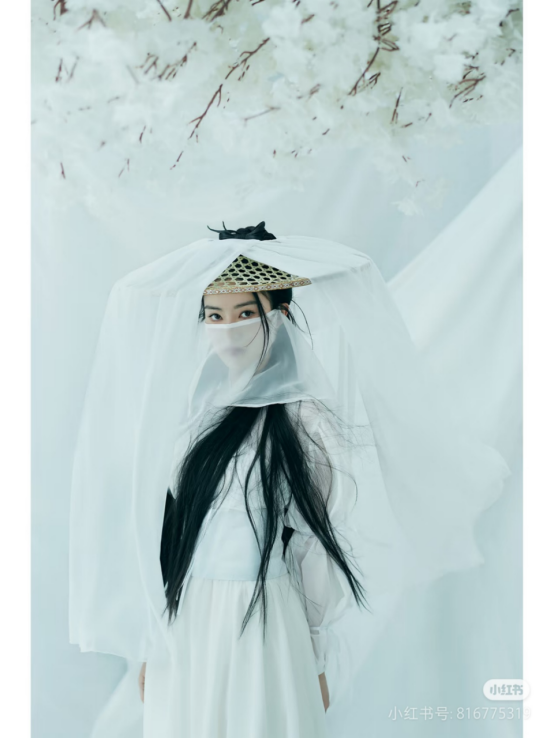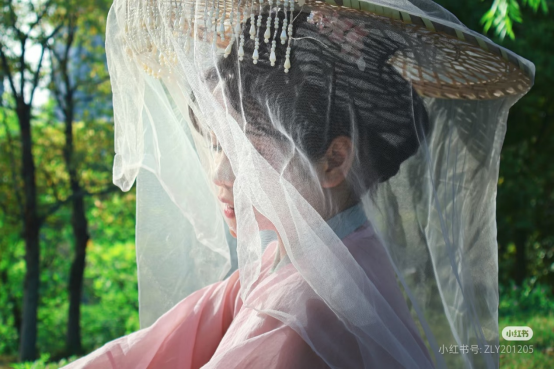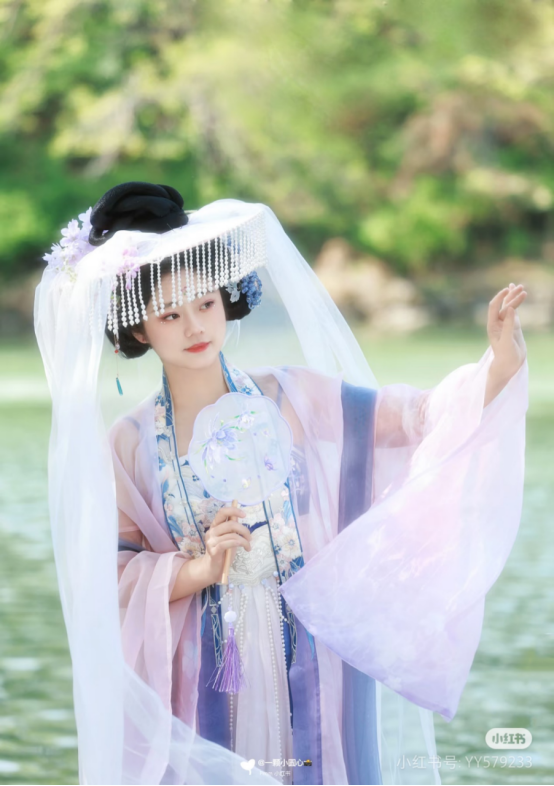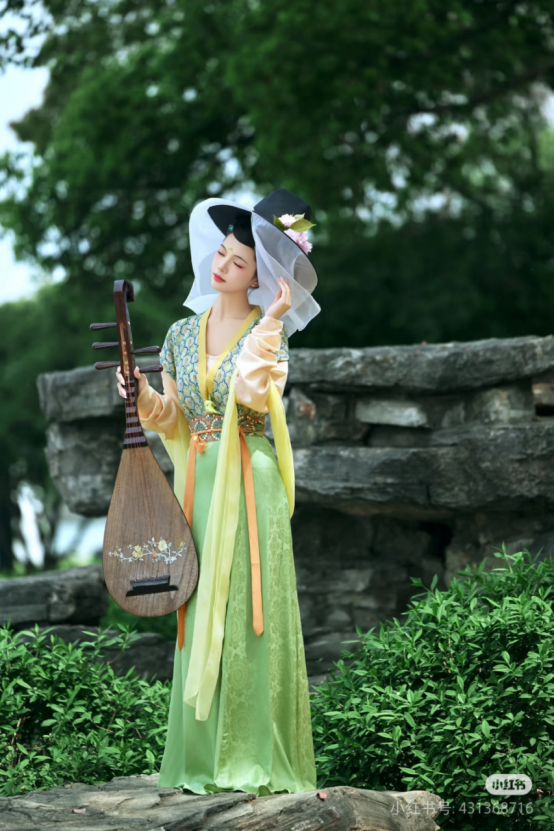Chinese traditional clothing structure absolutely cannot do without the existence of veils. Many people may be curious about veils and think they are dispensable decorations. If you think so, you have misunderstood the veil. In the thousands of years of development history of Chinese clothing culture, which ones are unnecessary? The answer is definitely none. Since ancient people created the veil, it naturally has its unique uses and practical reasons. So, what is the charm of this mysterious item, and how is the beauty of the veil reflected?

The history of veils
The development history of Chinese traditional veils has a long history, which was invented for people to use as early as the Pre-Qin period. The veil is a utensil used to cover women’s faces. The shape and functionality of the veil were greatly supplemented in the Tang, Song, Ming, and Qing dynasties. The earliest purpose of creating the veil was to protect women’s privacy, which reflected the ancient requirements for women to abide by etiquette. In addition, this utensil can cover up the flaws on women’s faces, similar to the role of a mask. Secondly, veils can provide women with different aesthetic feelings on different occasions, and they were also a kind of fashion item in ancient times.

Where is the attraction of veils?
As an accessory with both practical functions and aesthetic expressions, Chinese traditional veils have formed a complete clothing system after thousands of years of development. Chinese traditional veils are mainly divided into the shapes of mì lí (幂篱), wéi mào (帷帽), gài tóu (
盖头), and fù miàn jīn (覆面巾), and the core of their design lies in “covering without blocking”.
The light gauze of mì lí in the Pre-Qin period that hung down to the chest cleverly formed a translucent barrier. The wéi mào in the Song Dynasty used bamboo strips to support the structure of the veil. This design is very similar to the design of today’s sun-protective veils, which can be said to have the same effect. In the Tang Dynasty, the design of wéi mào became more open. The veil falling from the brim stopped slowly at the neck, and the face was completely exposed. Through this design, the dim beauty of women was created, using the limited to set off the infinite, making people imagine. The use of fù miàn jīn only appeared in specific occasions in ancient times. Different from the design of wéi mào, fù miàn jīn used a hoop to support the veil, which only covered half of the face, mostly used plain colors, and the materials were mainly light and breathable. The special veil of gài tóu is more common in weddings. “Lifting your gài tóu” sets off the 含蓄(implicit) respect, low-key elegance of traditional Chinese weddings very well.
The veil adds more notes to the personalities and temperaments of different women through this dim beauty, adding a lot of fun to life.

What aspects should be paid attention to when wearing a veil?
The matching of veils pays attention to the “three correspondences” principle. First, it should be matched with the clothing worn. Second, it should be matched with the hairstyle combed. Third, it should be matched with specific occasions. These three correspondences are very important for the matching of veils and are also a good reference for the matching principles of other accessories.
Chinese veils have always walked at the forefront of covering and displaying, etiquette and aesthetics. The veil condenses the core concept of “implicit beauty” in Oriental aesthetics within this size.







